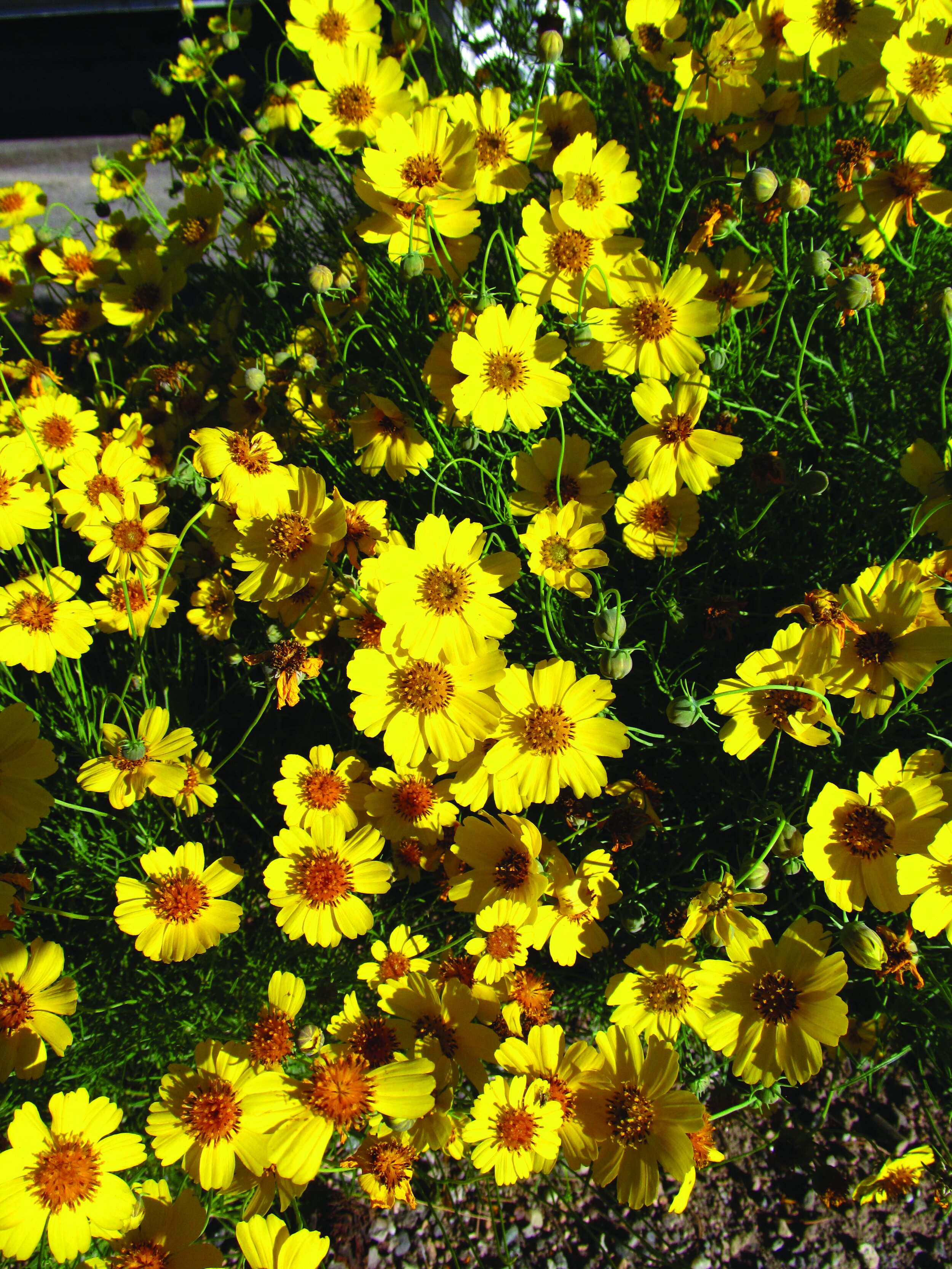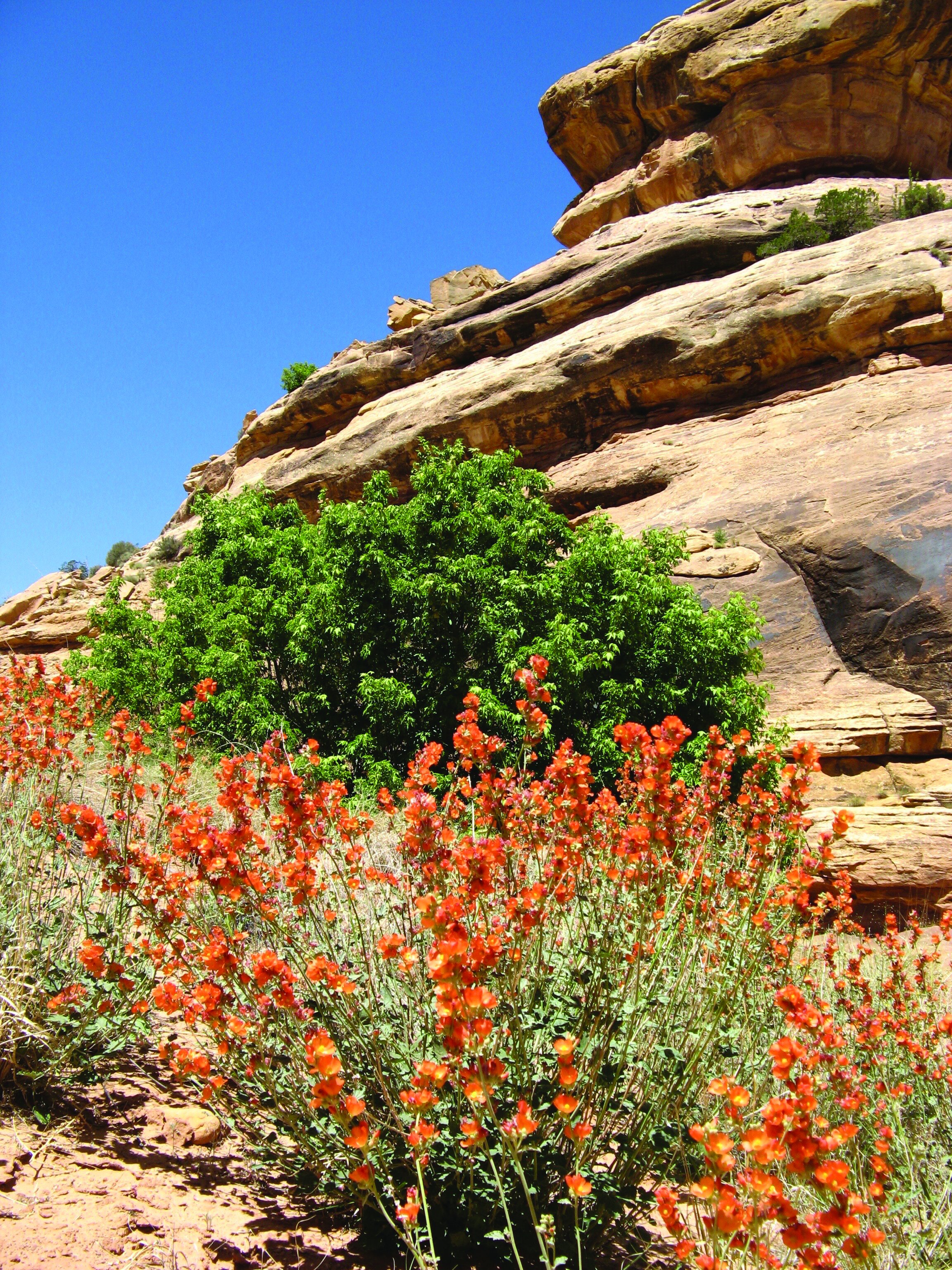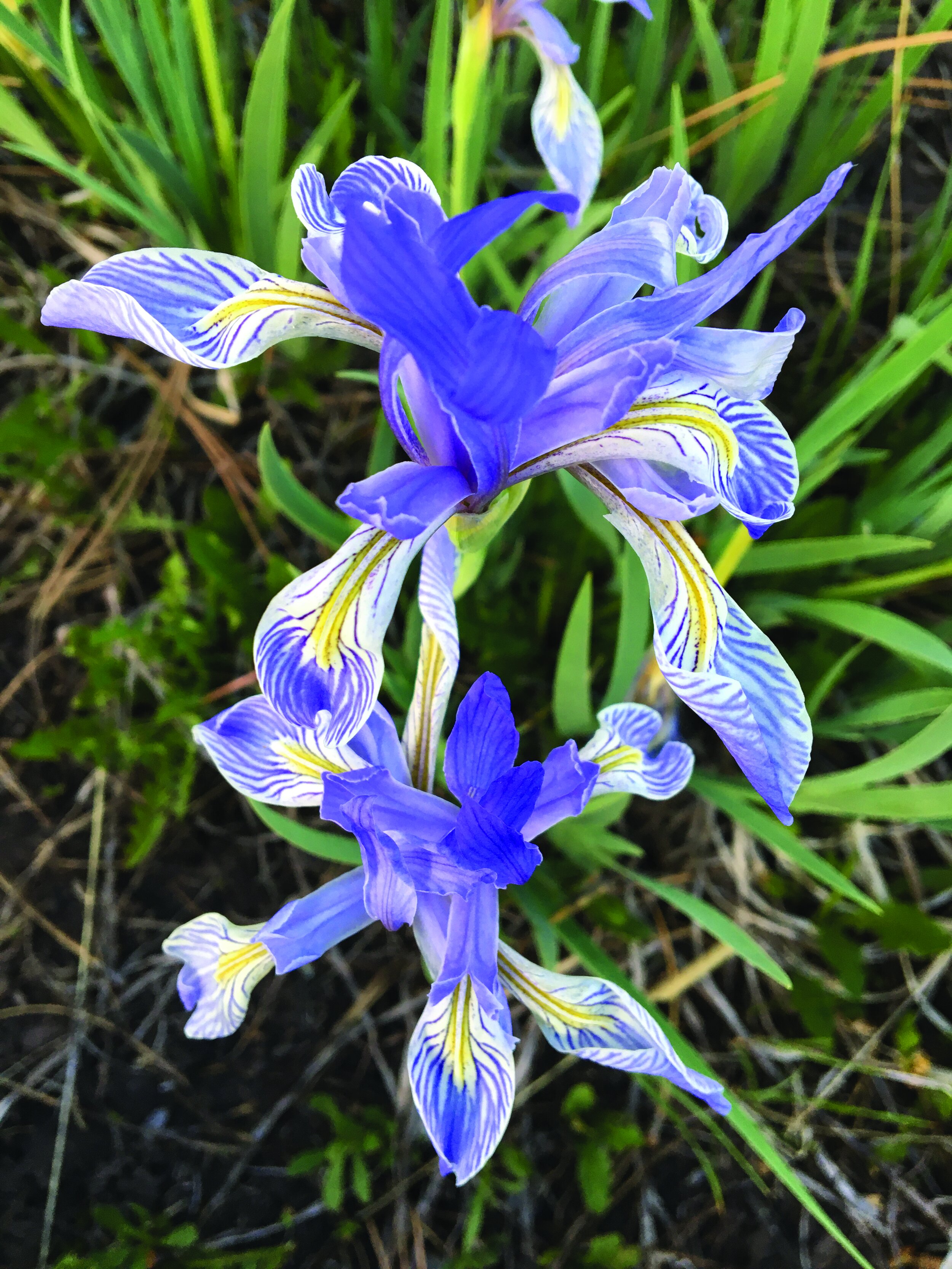Desert Blooms
Growing up in the lush, green hills of Wisconsin, I didn’t appreciate the Western Slope’s desert scape at first glance. I’ve long since done a complete 180 and now long for adventures among the rich palette of sandstone crags, slots and canyons, and annually crave the huge variety of late spring blooms.
On one Colorado National Monument hike, I counted a record 36 desert bloom species. Although our unique landscape is home to flora in the thousands, and the Indian Paintbrush is often the first to appear, here is a quick glance at five favorite beauties I’ve savored along hikes and byways.
Four-Nerve Daisy
Purple Penstemon
The Four-nerve Daisy, of the genus Tetraneuris, is a species of the sunflower family. Common names include Angelita Daisy, Perky Sue, Butte Marigold, Stemless Gold Flower and Bitterweed.
Tetraneuris means four-nerved and refers to the four veins in the petal or ray flower. Flower heads range from eight to 14 rays (petals), stand 4 to 16 inches high and have dense, hairy basal lance-shaped leaves, as well as hairy stems and bracts supporting the flower head.
They like dry, rocky, sandy hillsides and mesas, from the plains to foothills.
The Penstemon, with roughly 250 species, is the largest genus of flowering plants endemic to North America. They have partly tube-shaped opposing leaves and two-lipped flowers.
Their most distinctive feature is the prominent staminode. In most flowers, the inconspicuous staminode is in the inner whorls of the flower. However, the penstemon’s is longer and extremely hairy, giving the general appearance of an open mouth with a fuzzy protruding tongue. Thus, the inspiration for the common name — Beardtongue.
Frequently found in the open desert, the Penstemon comes in a variety of colors and can range from 4 inches to several yards in height.
Claret Cup Cactus is simply stunning. Its showy flowers have bright scarlet red to orange-red petals. The tips of the petals are rounded and stiff, strong enough for hummingbirds to perch on for pollinations. Hummingbirds are attracted to the large amount of nectar and brightly colored blooms. Claret Cup fruits are green to yellow green, pink or red, juicy and spiny.
Native to the Southwestern United States and Northern Mexico, Echinocereus triglochidiatus is a species of hedgehog cactus. Residing in a variety of habitats from low desert to rocky slopes, scrub and mountain woodland, the claret cup is most abundant in shady areas. It is known by several common names including Kingcup Cactus and Mohave Mound Cactus.
Orange Globe Mallow
Wild Iris
Orange Globe Mallow is part of the Sphaeralcea genus of flowering plants with approximately 50 species including annuals, perennials and shrubs. The Orange Globe Mallow loves full sun and is a welcome sight when the heat drives most other flowers out of bloom.
Its long wands of orange flowers resemble miniature hollyhocks. A deep-rooted wildflower native to the Western United States, Orange Globe Mallow is not the least bit picky about its soil and thrives in heavy clay.
Other commonly known names are False Mallows, Desert Globe Mallows or Apricot Mallow. Flowers range in the orange to red sphere.
Wild Iris is one of my truest treasures. Found on the Uncompahgre Plateau and LaSalle Mountain foothills in late spring, fields of wild iris can take your breath away. Where there’s one, there are hundreds or thousands. Blooming early in the season in wet or marshy areas, this showy wildflower is frequently missed.
Wild Iris have a slender stem, sword-shaped leaves and large, delicate lilac to purple petals that fold over. They often have white striations on the petals and faint bits of yellow, as well.
Alternate names for Wild Iris in the iris missouriensis family include Western Blue Flag, Flag Lily, Liver Lily and Water Flag.
Originally published in the Spring 2022 of Spoke+Blossom.




